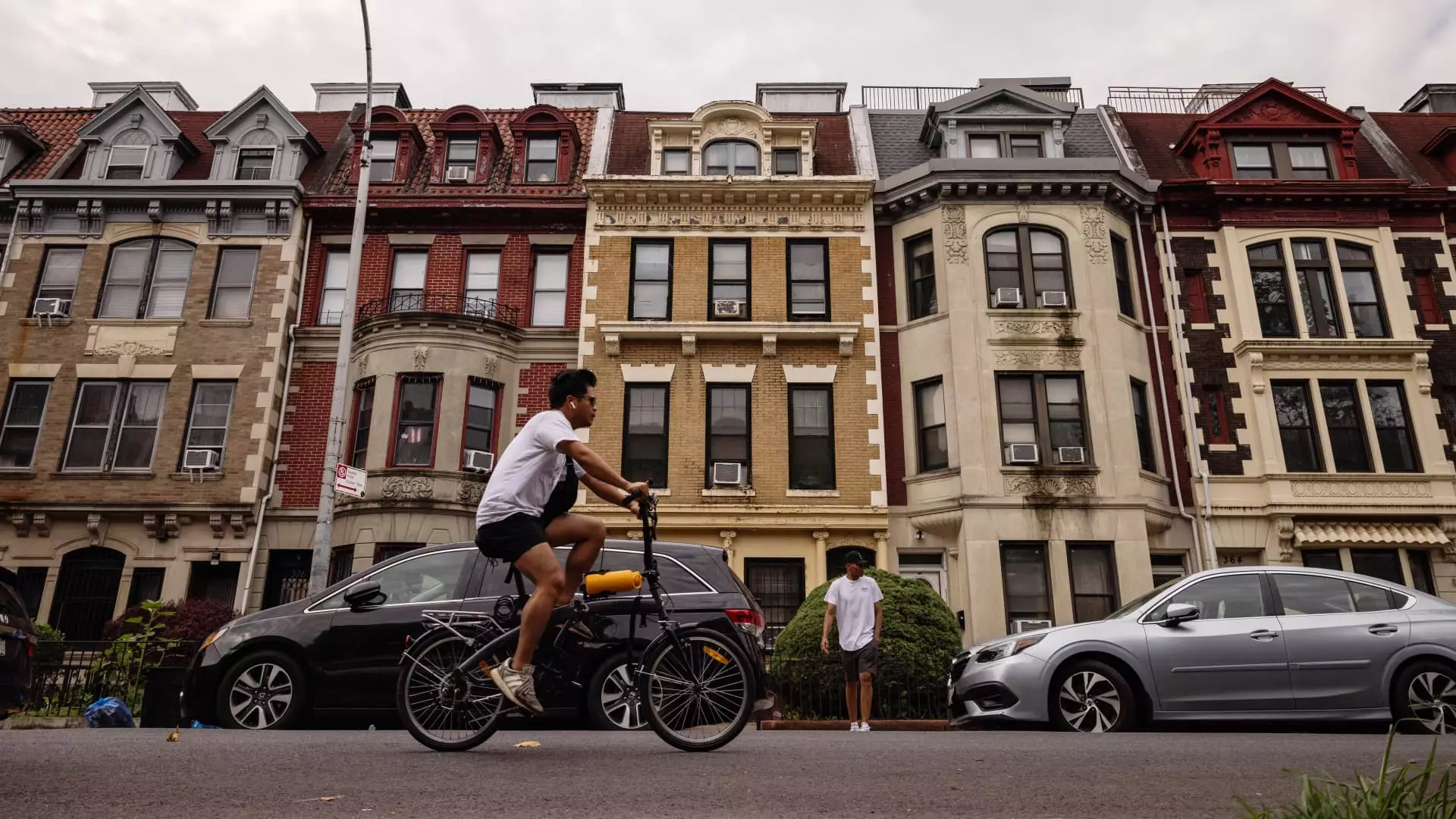The real estate landscape is indeed a baffling space these days. Despite reaching monumental heights in apartment construction—nearly 600,000 multifamily units completed in the past year—renting an apartment still feels akin to finding a needle in a haystack. This phenomenon, which has made waves in reports from outlets such as RentCafe, highlights an unsettling trend: the plethora of new housing supply isn’t translating into improved conditions for renters. On paper, 2023’s rental growth looks promising, but in reality, hopeful tenants face mounting competition, rendering this era a frustrating chapter in the history of housing.
Imagine, for a moment, the excitement of witnessing new buildings fill your favorite neighborhoods. However, this sheer volume of new apartments does little to alleviate the crushing demand fueled by stagnant wages, soaring property prices, and a high rate of lease renewals. It seems we are caught in a paradox; as more units become available, the competition appears to strengthen rather than weaken, leaving many in a state of confusion and despair.
Lease Renewal Rates and Their Implications
Compounding the issue further, we see lease renewal rates reaching a staggering 63.1%. This uptick reflects not just a reluctance to move, but also the undeniable realities of a turbulent economy where mortgage rates continue to climb. For many renters, the dream of homeownership is slipping further away, leading them to cling to existing leases with an iron grip. Rather than the expected influx of mobility in the rental market, we’re witnessing a stagnation that encourages landlords to raise their defenses—resulting in fewer available units and increased competition among would-be tenants.
Landlords, capitalizing on this minimized tenant mobility, have started enforcing longer lease periods. The extended time frame solidifies their revenue at the expense of renters, who find themselves cornered into longer commitments in a climate rife with uncertainty. It is concerning that each apartment typically sees an average of seven applicants, a glaring window into the frenzy that has enveloped the market. If this doesn’t illustrate the plight of the modern renter, I don’t know what does.
Miami: The Hotspot with Hidden Attacks
A standout market in this saga is Miami, dubbed “Wall Street South.” While opportunistic brands and burgeoning industries drive demand for housing in this sunny locale, it paints a grim picture for renters. An astounding average of 14 applicants for every available unit creates a battleground where only the most determined—or financially equipped—succeed in securing a place to live. As the government focuses on tax incentives to attract talent, it inadvertently places overwhelming pressure on renters, forcing them to navigate a market fraught with heavy competition and inflated costs.
The diversity of Miami’s economic stream may seem promising, yet it overshadows the real crisis—accessibility for the average worker. The allure of no income tax and a prime geographic location falls short when affordability takes center stage. Amidst all this growth, the alarming question remains: Who exactly is winning in this flourishing environment? Certainly not the renters.
The Midwest: A Surprising Competitor
Perhaps not as flashy as booming markets like Miami, the Midwest has quietly emerged as a contender for the most competitive rental markets. With ten cities listed among the top twenty hottest areas for rental housing, it’s maddening that places like suburban Chicago, Detroit, and Cincinnati are catering to heightened demand with minimal new supply to counterbalance it. For those of us rooting for a renaissance of urban living, this rapid growth in demand signals a potentially alarming shift.
In the Midwestern cities, renters face stark realities as rising rents undermine the affordability that these regions historically represented. Nationwide rent increases—0.3% in February alone—are just the tip of the iceberg, and as we inch toward summer, the trend is all but certain to continue. The market buzzes with anticipation, while many renters can only hold their breath in despair of an impending price surge, reminiscent of the staggering highs witnessed in 2021.
The Ongoing Struggle of Renters
One cannot overlook the irony that while we celebrate record levels of construction, the vibrant anticipation for economic recovery feels hollow when the burden falls so heavily on the shoulders of renters. Those involved in the housing industry need to recognize that while new units are essential, they alone are not the solution. Policies must be enacted that protect renters from predatory pricing and serve as a safeguard against the overwhelming demand, which currently runs unabated.
Our society stands at a crossroads. Will we continue to let economic forces dictate who thrives and who merely survives, or will we finally advocate for fairness in housing? As the competition intensifies and more renters are squeezed out, we must refuse to turn a blind eye to this alarming crisis. The future of housing depends on meaningful, progressive solutions that prioritize the well-being of renters over profits. Nothing less will suffice.

